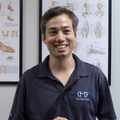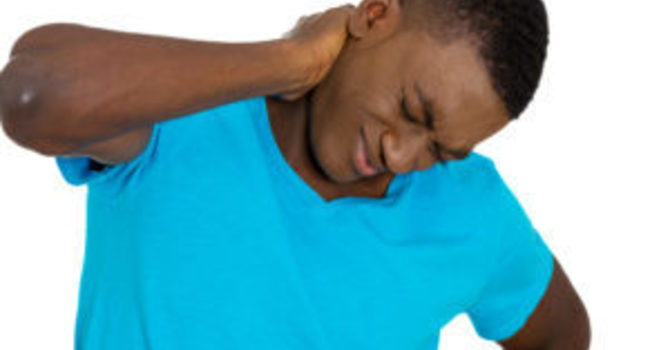
We don’t often think about our shoulder blades but perhaps we should. The technical name for the shoulder blade, is scapula. These bony blades on your mid and upper back region are the attachment points for 17 different muscles! That’s a lot. These muscles act to coordinate the movement of your scapulae as they slide over your ribcage in many different ways. Of these 17 muscle attachments, 4 of them make up your rotator cuff muscles which help move and stabilize your shoulder, and are often a source of pain and injury in shoulder cases. These 4 muscles are:
- Supraspinatus
- Infraspinatus
- Teres minor
- Subscapularis
Your shoulder blade articulates with your arm via the glenohumeral joint and with your clavicle via the acromioclavicular joint. Therefore, your shoulder blades are literally just “hanging on” to our bodies and sliding over our ribcage by way of these small articulations.
Remarkably, your shoulders in general, are really just hanging on to the rest of your skeleton by one articulation called the sternoclavicular joint which is where your breast bone meets your clavicle.
This ultimately allows your shoulder to have the greatest range of motion of any joint in your body. The trade off however, is that it’s also the most inherently unstable. This leads us back to your shoulder blade, aka scapula. Your scapula is essentially the foundation upon which the shoulder creates stability and transfers force. Remember those 17 muscle attachments? Their mobility, stability, and coordination have a large role in determining how stable of a foundation you have during shoulder and arm movements.
In working out, playing sports, and participating in day to day life, we need our scapulae to show up and work properly. SICK scapula is an acronym for:
- S: Scapular malpositioning
- I: Inferior angle prominence
- C: Coracoid tenderness/malposition
- K: dysKinesis
Altered scapular positioning and motion, means our shoulder blades are SICK and not showing up to work when we need them most. Reasons for SICK scapulae can be neurological, muscular, or joint injury related.
Examples:
- Neurological:
- A disc herniation, affecting the nerves which innervate our shoulder blade muscles, can disrupt the position and movement of the scapula.
- Peripheral nerve entrapments or injury
- Muscular:
- Muscle imbalances are the most common reason for a SICK scapula and they are caused by:
- Overuse causing soft-tissue adhesion
- Slouched posture
- Overtraining pecs and biceps, and under training scapular stabilizers
- Poor core and hip muscular balance, not allowing proper transfer of forces from the ground up, or from the core out (Ex. when swinging a golf club or throwing a baseball, we must be able to generate force from the ground up to the trunk of our body and out to our shoulders and arms.)
- Muscle imbalances are the most common reason for a SICK scapula and they are caused by:
- Joint injury:
- Previous injury will throw off scapular motion and position.
- AC joint fractures or separations
- Labral tears
- Shoulder dislocations
- Bicep tendonitis
- Etc
SICK scapula, due to muscular imbalances, is often silent and asymptomatic in its initial stages. Getting a proper screening and starting a treatment plan which incorporates scapular stabilizing exercises, can be as important to your shoulder health as brushing your teeth is to preventing cavities. SICK scapula is a majorly overlooked contributor to many shoulder conditions such as:
- Shoulder impingement syndrome
- Rotator cuff weakeness
- Rotator cuff tendonitis, tendinosis, and tears
For some, SICK scapula can be glaringly obvious. For example, reach behind your back as if you’re going to scratch your lower back and look at your shoulder blade in the mirror. If the inside border of your shoulder blade “pops” out away from your spine and rib cage you likely have a SICK scapula. A similar thing would occur when you do a push up. However, in many cases, the problem is not as visually obvious and requires a more thorough exam which includes static posture, as well as movement assessments.
Your serratus anterior, middle trapezius, and lower trapezius are muscles which often require strengthening when you have a SICK scapula. Conversely, your pecs often require lengthening and relaxation. Incorporating exercises which address these muscles and reducing any soft-tissue dysfunction in and around the shoulder girdle, is often the best long-term strategy for improved shoulder health and avoiding future injury.
©CenterForMusculoskeletalFunction2018







